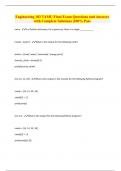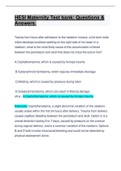Summary
Summary A Christmas Carol GCSE revision pack: themes, characters, context, quotes,annotations
List of themes and main characters. Annotated quotes for themes: Redemption Supernatural Social justice Family Unannotated quotes for themes: Poverty Memory Death and loss Finding happiness Forgiveness Time Christmas Good luck!
[Show more]













